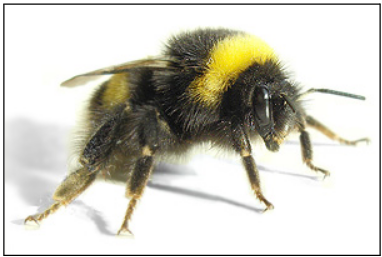News Excerpt:
Scientists have revealed queens of the common eastern bumblebee, a species widespread in eastern North America, can withstand submersion for up to a week when hibernating.
More about News:
- The researchers conducted an experiment by placing 143 unmated, hibernating queens of the common eastern bumblebee in individual plastic tubes with damp topsoil.
- The survival rates were similar regardless of the duration and conditions the queens were subjected to, with 81% of the queens submerged for a week still alive at 8 weeks.
- Queens with higher weight had a greater chance of survival.
- This flood tolerance is unusual as most insects overwintering as adults, such as ground beetles, cannot cope with being submerged in water.
- The researchers speculate that the low oxygen requirements of hibernating queens could be a factor contributing to their resilience to flooding.
- The findings suggest that increased winter rainfall due to climate change may not significantly impact hibernating queen bumblebees.
- Future research will explore the mechanisms behind the queens' flood tolerance and whether the results hold for other bumblebee species.

|
About Bumblebee:
- Bumblebees belong to the genus Bombus within the family Apidae.
- The family Apidae includes the well-known honey bees and bumblebees, as well as carpenter bees, cuckoo bees, digger bees, stingless bees, and orchid bees.
- Bumble bees are important pollinators of wild flowering plants and crops.
- The bumblebee's commercial value is as a pollinator of crops.
Features:
- Bumblebees are large yellow and black flying insects with a distinct buzz. There is variation in coloration among bumblebees and some species have bands of red, yellow and black.
- They have stocky bodies that are covered with many hairs to which pollen adheres.
- Bumblebee workers and the queens can sting, and their stinger is smooth - not barbed like that of the honeybee -
- So they can sting more than once.
- Male bumblebees cannot sting as they do not have a sting.
- Bumblebees have four wings, the two rear wings are small and usually attached to the fore wings by a row of hooks called hamuli.
- The wings move rapidly, at 130-240 beats per second.
Range / Habitat:
- There are over 250 known species, existing primarily in the Northern Hemisphere. Hedgerows near orchards provide food and shelter for pollinators like bumblebees.
Diet:
- Bumblebees harvest nectar (carbohydrates) and pollen (protein) from flowering plants.
Behavior:
- Bumblebees are social insects that live in colonies. The queen bee, drones and worker bees all have specific tasks to help support the colony. The queen bee lays hundreds of eggs.
|



